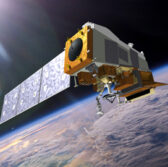 A United Launch Alliance-built Delta II rocket lifted off Saturday with the first of four polar-orbiting environmental satellites developed through a collaborative program between NASA and the National Oceanic and Atmospheric Administration.
A United Launch Alliance-built Delta II rocket lifted off Saturday with the first of four polar-orbiting environmental satellites developed through a collaborative program between NASA and the National Oceanic and Atmospheric Administration.
ULA said Saturday it launched the Joint Polar Satellite System-1 from Vandenberg Air Force Base in California at 1:47 a.m. Pacific time.
The satellite is designed to provide observations for the country’s various projects and services such as weather forecasting and environmental hazard assessment missions.
NASA said Saturday JPSS-1 began to operate on its own power approximately an hour after it launched from Space Launch Complex-2 and will be rebranded as NOAA-20 upon arrival on its final orbit.
JPSS-1 will undergo a three-month checkout and validation phase for its five advanced instruments before the system becomes operational, the space agency noted.
“Polar satellite observations not only help us monitor and collect information about current weather systems, but they provide data to feed into our weather forecast models,” said Louis Uccellini, director of NOAA’s National Weather Service.
Ball Aerospace & Technologies, Harris, Northrop Grumman and Raytheon helped design and develop instruments and other features integrated on the JPSS-1 satellite.
The JPSS-1 spacecraft also carried five CubeSats designed to support research on the use of polymers manufactured with three-dimensional printing technology for in-space manufacturing, bit flip memory testing, weather data collection, radar calibration and space radiation measurement.




